Dragon fruit, also known as pitaya, is a unique tropical cactus that produces exotic, brightly colored fruits with a sweet and refreshing taste. Native to Central and South America but widely cultivated in Asia and other warm regions, dragon fruit thrives in hot, sunny environments. But for gardening enthusiasts in cooler climates or those with limited outdoor space, an intriguing question arises:
Can dragon fruit survive indoors year-round?
The short answer is yes — with the right care and conditions. However, growing dragon fruit indoors poses unique challenges. In this article, we’ll explore how to successfully cultivate dragon fruit indoors throughout the year, covering lighting, soil, watering, temperature, and more.
Understanding Dragon Fruit’s Natural Habitat
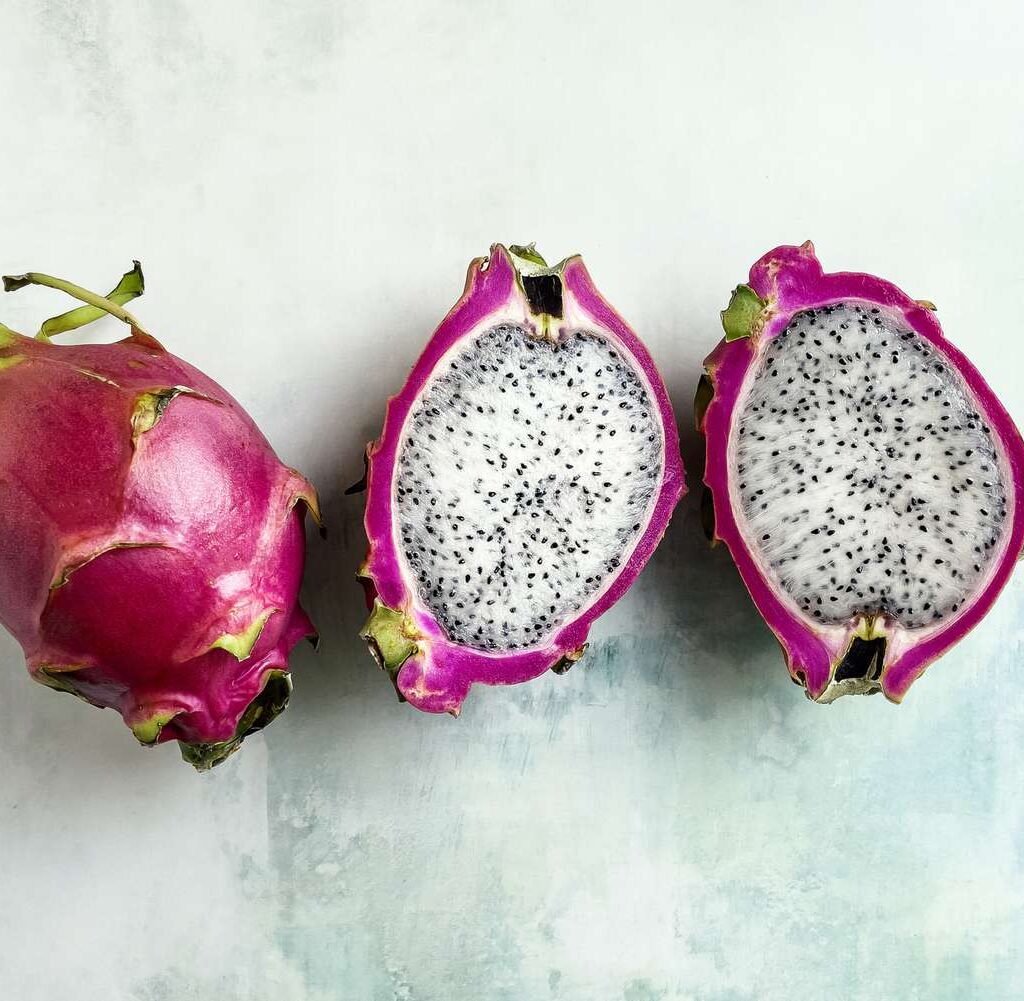
To grow dragon fruit indoors, it’s essential to understand its natural environment:
- It’s a tropical epiphytic cactus, meaning it grows on other plants in warm, humid conditions.
- It requires plenty of sunlight, well-drained soil, and good airflow.
- It’s used to hot days and cooler nights, with minimal cold exposure.
Knowing this, you can mimic its native habitat indoors using containers, lighting, and smart placement.
Benefits of Growing Dragon Fruit Indoors
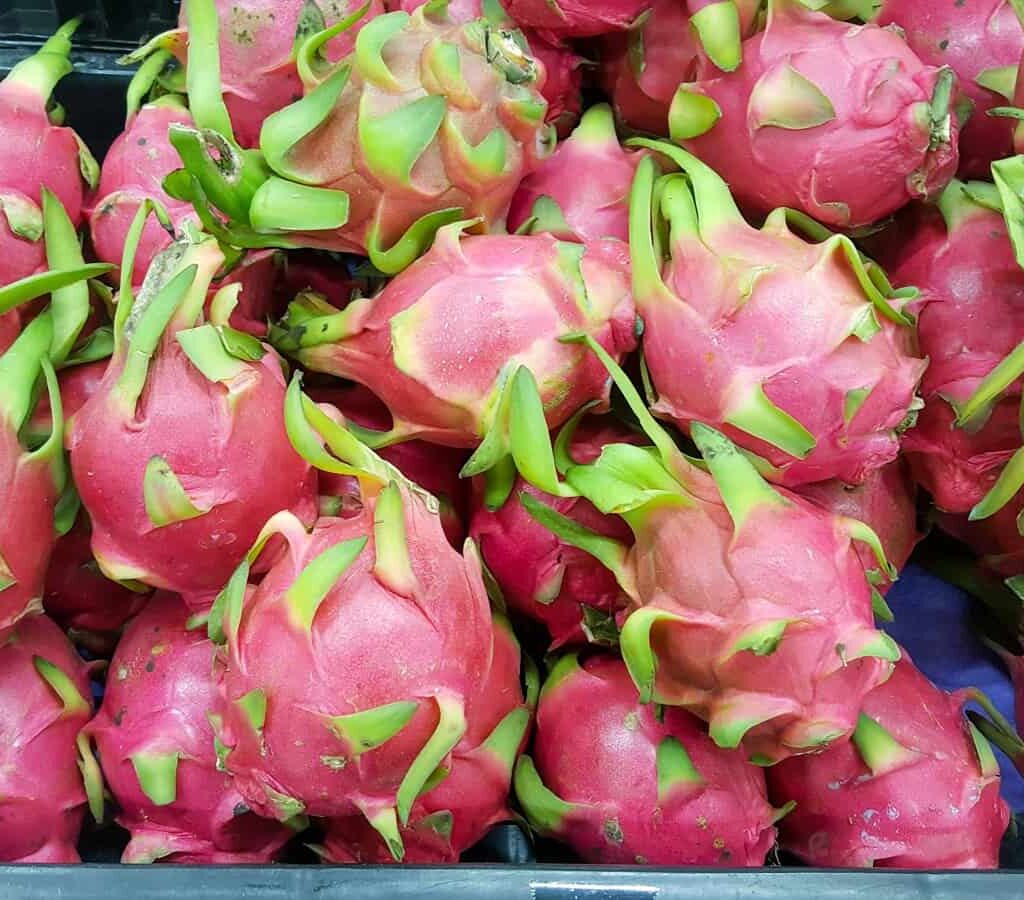
- Year-round protection from frost, pests, and harsh weather.
- Space efficiency — perfect for apartments or small homes.
- Ornamental appeal — the plant’s twisted stems and occasional flowers make a striking addition to indoor décor.
- Tropical fruit at your fingertips — fresh, homegrown dragon fruit without a backyard!
1. Choosing the Right Container
Why It Matters:
The container is your plant’s entire world — it determines drainage, root space, and mobility.
Best Practices:
- Use a large, sturdy container (at least 10–15 gallons) with multiple drainage holes.
- A tall, narrow pot encourages vertical root growth and works well with trellises.
- Place a layer of gravel or coarse rock at the bottom for added drainage.
2. Selecting the Right Soil
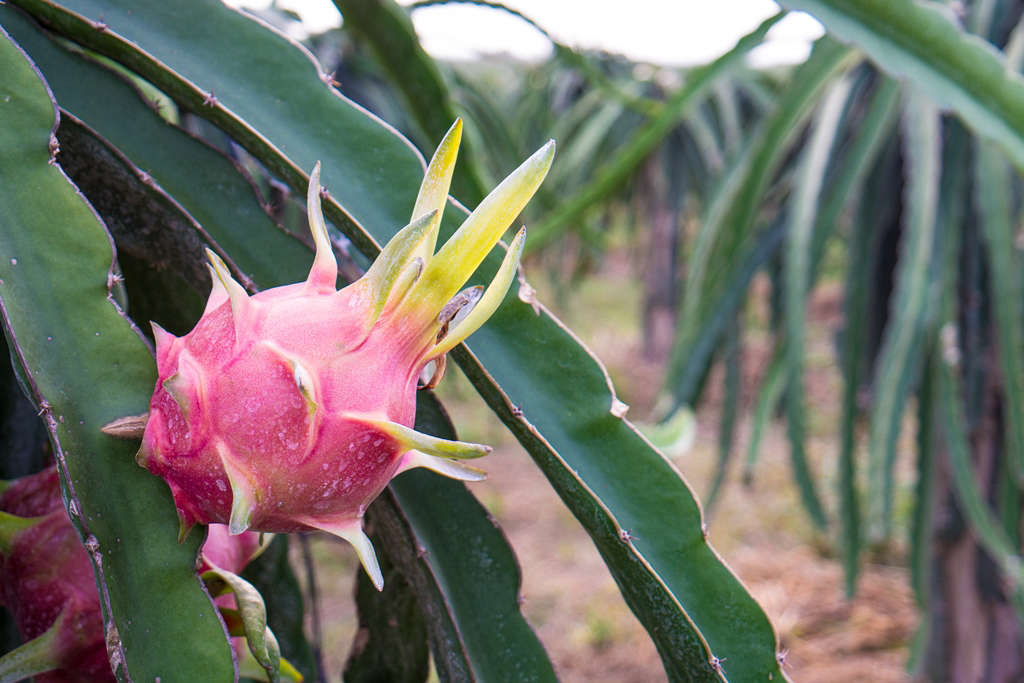
Why It Matters:
Indoor dragon fruit plants are more prone to overwatering, so soil must drain fast.
Best Practices:
- Use cactus or succulent potting mix.
- Add perlite or sand to increase drainage.
- Mix in compost for organic nutrients.
- Maintain a soil pH of 6 to 7, which is ideal for nutrient absorption.
3. Providing Adequate Light
Why It Matters:
Dragon fruit plants are light lovers and need at least 6–8 hours of full sunlight daily.
Challenges Indoors:
- Most windows provide filtered or indirect light, which isn’t enough for optimal growth.
Solutions:
- Place near a south- or west-facing window where light is strongest.
- Supplement with full-spectrum grow lights (LED or fluorescent) for 10–12 hours a day.
- Use timers to automate lighting, especially in winter months.
4. Ensuring Proper Watering
Why It Matters:
Overwatering is the number one cause of failure for indoor dragon fruit plants.
Best Practices:
- Water only when the top 1–2 inches of soil are dry.
- Reduce watering during cooler months or when the plant is dormant.
- Use a moisture meter to avoid guesswork.
- Always empty saucers under the pot to prevent root rot.
5. Regulating Temperature and Humidity
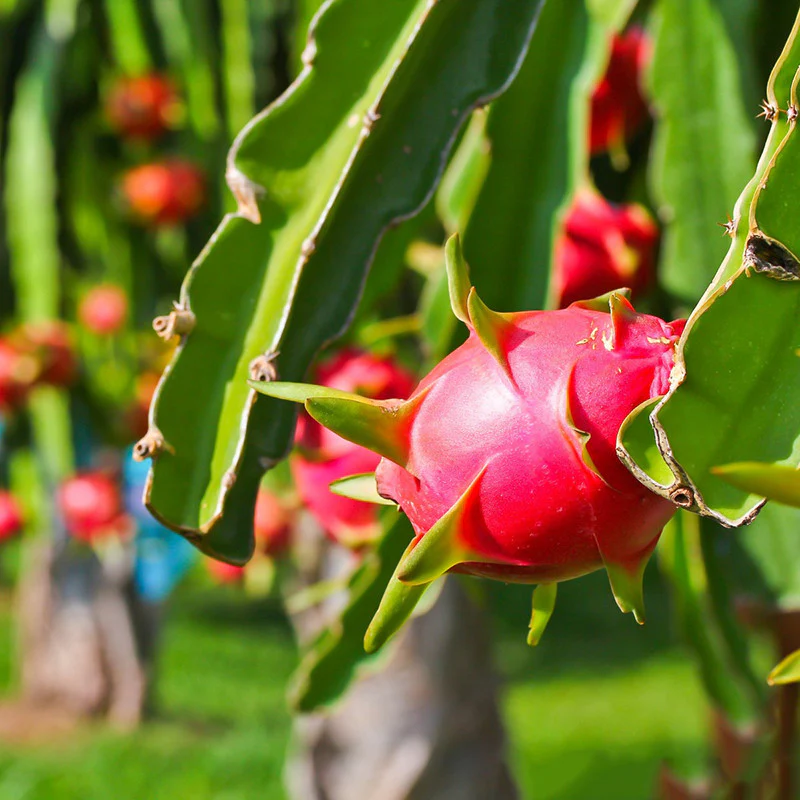
Ideal Conditions:
- Temperature: 65°F to 85°F (18°C to 29°C)
- Humidity: Moderate to high (40–70%)
Tips:
- Avoid placing near drafty windows or air vents.
- In dry climates, increase humidity using:
- Humidifiers
- Pebble trays with water
- Grouping plants together
- Keep your dragon fruit away from cold floors during winter.
6. Supporting Growth with a Trellis
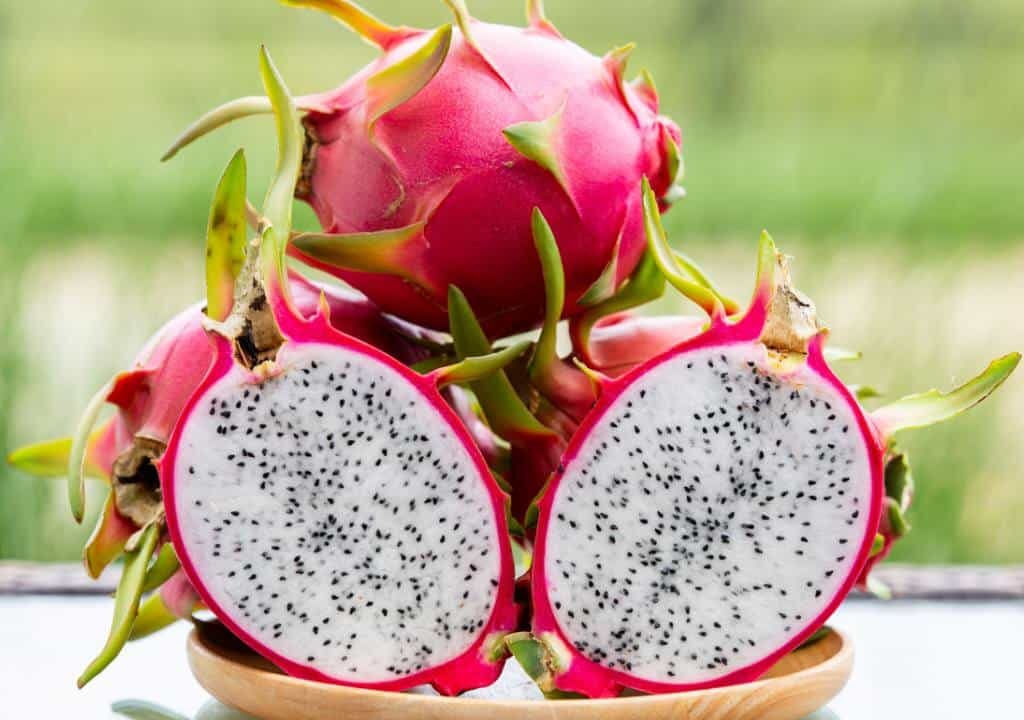
Why It Matters:
Dragon fruit is a climbing cactus — it grows vertically and spreads outward, eventually forming long branches that drape.
Best Practices:
- Install a sturdy trellis or wooden stake in the pot.
- Train stems upward using soft ties.
- Let top branches cascade over for natural growth and future flowering.
7. Fertilizing Indoors
Indoor plants rely completely on what you provide — so consistent feeding is essential.
Best Practices:
- Use a balanced liquid fertilizer (e.g., 10-10-10) every 4–6 weeks in the growing season (spring/summer).
- Reduce feeding in fall/winter when the plant enters dormancy.
- Once mature, switch to a low-nitrogen, high-phosphorus fertilizer to encourage blooming.
8. Pollination Challenges Indoors
Why It Matters:
Many dragon fruit varieties are self-sterile, meaning they need another plant or manual help to pollinate and bear fruit.
Solutions:
- Choose self-pollinating varieties (like ‘Vietnam White’).
- Hand-pollinate flowers using a soft paintbrush:
- Collect pollen from the stamen.
- Gently apply it to the stigma of the same or another flower.
- Most blooms open at night, so check frequently during flowering periods.
9. Pruning and Maintenance
Dragon fruit can grow wild if not pruned.
Best Practices:
- Prune dead or crowded branches to maintain airflow.
- Cut back leggy stems to stimulate bushier growth.
- Always use sterilized tools to avoid infection.
10. Monitoring for Pests and Diseases
Even indoors, pests like mealybugs, spider mites, aphids, and fungal infections can appear.
Best Practices:
- Inspect plants weekly for signs of pests.
- Use neem oil spray or insecticidal soap for organic control.
- Avoid overwatering, which invites fungus and root rot.
Can Dragon Fruit Bear Fruit Indoors?
Yes, but it takes patience and ideal conditions. Here’s what to expect:
- Cuttings can start producing fruit within 6–12 months.
- Seed-grown plants may take 2–3 years to mature.
- With the right light, pollination, and support, indoor plants can yield 1–4 fruits per year or more once established.
Common Mistakes to Avoid
- Using garden soil indoors — it’s too heavy and retains moisture.
- Overwatering — leads to rot, the most common killer.
- Ignoring light needs — insufficient light causes weak growth.
- Skipping pollination — without pollination, no fruit will form.
- Neglecting pruning — overgrown stems reduce air circulation and fruiting potential.
Is It Worth Growing Dragon Fruit Indoors?
Absolutely! While it may not be as productive as an outdoor plant in tropical zones, growing dragon fruit indoors offers:
- A rewarding, long-term gardening experience
- A striking ornamental plant with architectural appeal
- The thrill of producing exotic fruit at home
It’s a great conversation piece and a fulfilling project for those who enjoy nurturing tropical plants in a controlled environment.
Conclusion
So, can dragon fruit survive indoors year-round? Yes — and not only survive but thrive, provided you recreate its natural tropical conditions: warmth, light, good drainage, and a bit of climbing space.
Whether you’re an apartment dweller or someone living in a colder region, dragon fruit can be a beautiful and fruitful addition to your indoor plant collection. With the right care, patience, and setup, you’ll not only enjoy its dramatic growth but possibly harvest your own sweet dragon fruit — all from the comfort of your home.






Leave A Comment